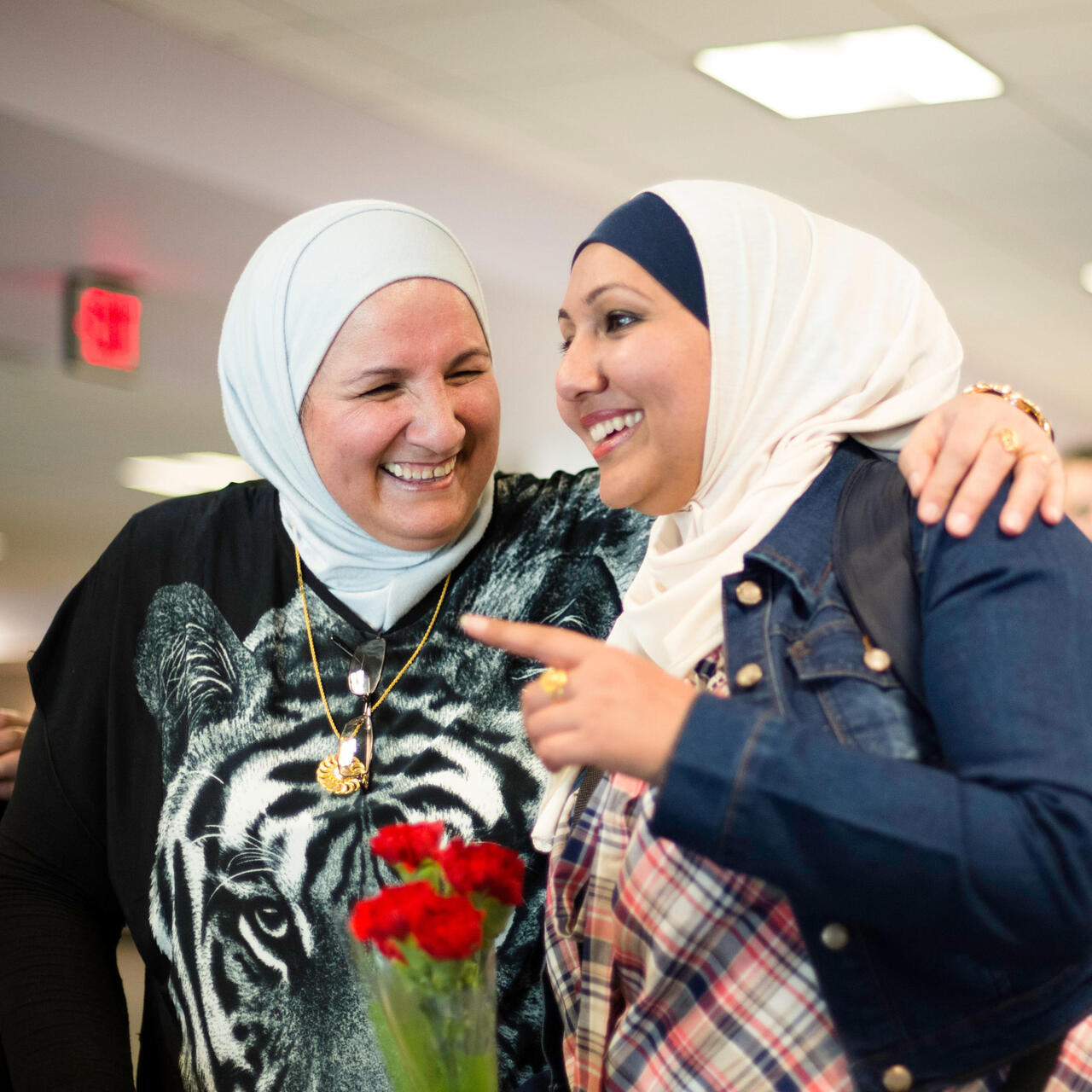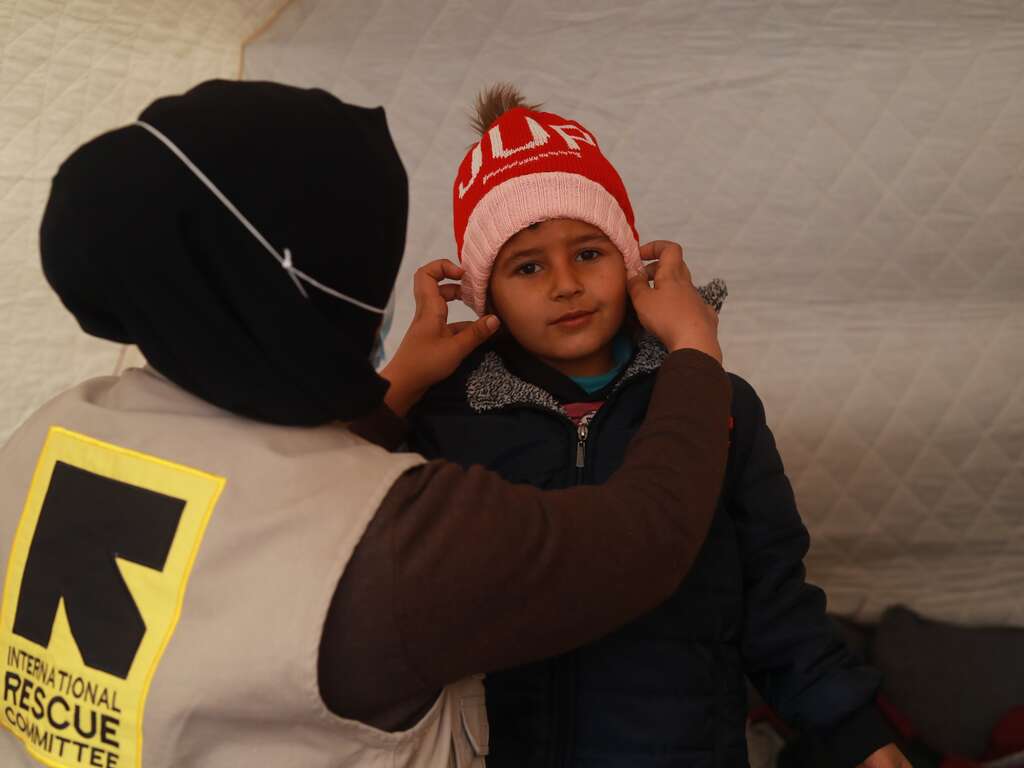IRC launches programs for separated families in the U.S.
- The U.S. federal courts gave the Trump Administration until July 26 to reunify the nearly 3,000 children, who have been separated at the U.S. border, with their parents.
- The IRC is mobilizing a rapid response team that will provide a range of services to asylum-seeking families across the U.S.
- We will help reunify parents and children who have been released from immigration custody as well as connect them with critical legal services, help them access psychosocial support and other basic needs.
Country facts
- Population: 334 million
- Rank in Human Development Index: 8
IRC response
- Started work in: 1933
- People resettled: 370,000 since 1975
Refugees are men, women and children fleeing war, persecution and political upheaval who have crossed borders to seek safety in another country. Most eventually go home when it’s safe, some stay in temporary refugee settlements, and a tiny fraction resettle in a third country, such as the U.S.
Refugee status is determined by the United Nations. Most refugees who enter the U.S. refugee admissions programme are identified and referred for resettlement in the U.S. by the U.N. refugee agency (UNHCR), a U.S. embassy or an approved humanitarian aid organisation.
The U.S. is just one of 28 resettlement countries. Out of the nearly 20 million refugees in the world, less than 1 percent are considered for resettlement worldwide.
The U.S. accepts a limited number of refugees each year. The President in consultation with Congress determines the authorised target for refugee admissions through a Presidential Determination.
President Obama pledged to resettle 110,000 refugees in 2017, but the Trump administration slashed that number by more than half and then set a record-low refugee admissions cap of 45,000 for 2018.
The IRC projects that only 15,000 refugees will make it to the U.S. in 2018 as a result of the Trump travel ban and other arbitrary measures.
Applicants for refugee admission to the U.S. must satisfy the following criteria:
- The definition of a "refugee" as determined by U.S. government officials.
- Be among those refugees determined by the President to be of special humanitarian concern to the U.S.
- Be otherwise admissible under U.S. law.
- Not be firmly resettled in any foreign country.
Although a refugee may meet the above criteria, the existence of the U.S. Refugee Admissions Programme does not create any entitlement for that person to be admitted to the U.S.
The hardest way to come to the U.S. is as a refugee.
Refugees are vetted more intensively than any other group seeking to enter the U.S. All those seeking to come here must first be registered by the United Nations refugee agency, which identifies the families most in need. The U.S. then hand-selects every person who is admitted.
The U.S. resettlement programme gives priority to refugees, usually vulnerable families, who have been targeted by violence. The U.S. does not recognise as refugees people who have committed violations of humanitarian and human rights law.
Security screenings are intense and led by U.S. government authorities, including the FBI, the Department of Homeland Security, the Department of
Defense, and multiple security agencies. The process typically takes up to 36 months and is followed by further security checks after refugees arrive in the States.
The Resettlement Support Centre (RSC), run by agencies like the IRC, through cooperative agreements with the U.S. Bureau of Population, Refugees, and Migration, help refugees and their families prepare their cases to the Department of Homeland Security (DHS), compiling personal data and background information for security clearance.
Once refugees have been cleared for resettlement, the U.S. government works with the IRC and eight other national resettlement agencies to help them restart their lives in America.
Refugees may be placed in a city where they have relatives or friends, or where there’s an established community that shares their language or culture. Other considerations include the cost of living and a community’s ability to provide medical services. However, as legal U.S. residents, refugees may live in any state they choose.
Preparation for travel
Before refugees leave the countries where they temporarily reside, they sign promissory notes agreeing to reimburse the U.S. government for travel costs. They also attend a class to learn about what to expect when they arrive in their new country, with briefings on American culture, U.S. laws, health benefits and other critical information. Officials also conduct a final screening and additional security checks before departure.
Arrival in the U.S.
Refugees are usually greeted and welcomed at the airport by case workers from resettlement agencies like the IRC to ensure their transition is as comfortable as possible. Agencies are responsible for finding a suitable, affordable home for refugee families, something many of these refugees have gone without for years. Families also receive basic furnishings, food and other immediate assistance.
Getting on their feet
For the first 90 days, resettlement agencies work with state and local governments and community organisations to help new arrivals settle into their communities.
- Refugees are introduced to their local health care system. Although they have had through check-ups before entering the U.S., they receive additional examinations by medical professionals in their new communities.
- Learning English is an essential step to becoming self-sufficient. Agencies help assist refugees to enrol English courses at their local offices or help families find classes nearby.
- Newly arrived refugees have endured years of trauma and hardship; that emotional burden does not lift once they’re in the U.S. Agencies, service providers and local communities work together to help survivors of violence and human trafficking receive the support and care they need in order to recover.
- Parents are informed about schooling options and caseworkers help to enrol children in school. Aid agencies help ensure each child has a backpack, notebooks and other supplies for their first day.
- Refugees receive stipends to cover their first three months in the U.S., but they are encouraged to find work quickly—and most do. Agencies reach out to local employers, some run by former refugees or other immigrants, to find job opportunities for them. Refugees can also receive support in putting together their resume and preparing for job interviews.
Once they acclimate to their new environment, refugees often thrive and contribute to their communities, building their careers, purchasing homes, building businesses, gaining citizenship.
Learn more about how the refugee vetting and resettlement process works.
The IRC has 28 offices across the United States that support newly arrived refugees by providing immediate aid, including food, housing and medical attention.
Each resettlement office serves as a free, one-stop centre for refugees’ needs during their pivotal first months in the U.S. Through a network of staff members and volunteers, the IRC helps refugees learn about life and customs in America, secure jobs, learn English, and become citizens. We provide most of the basic things they need to restart their lives here and we help them overcome cultural barriers so that their adjustment is as easy as possible.
Through community gardening, nutrition education and small-business farming, the IRC's New Roots programme gives hundreds of refugee farmers the tools and training they need to grow healthy and affordable food and become self-sufficient.
Refugees are encouraged to find work quickly and stand on their own feet — and most do. Refugees even pay back the loans they take for their plane tickets here.
Over 65 million people have been forced to flee their homes due to conflict, violence and persecution. In addition, over 21 million people have been forced to leave their countries and are now living outside their national borders as refugees. The U.N. estimates that 1.19 million of these refugees are in need of resettlement to a third country. The IRC believes in resettlement as a key mechanism to protect the most vulnerable refugees. In Europe, the IRC is calling for an ambitious, permanent and humane resettlement scheme that will establish a structured process for resettling refugees.
Building on our history of resettlement leadership in the U.S., the IRC believes that Europe can achieve the same success. As outlined in our report, ‘Pathways to Protection’, the IRC is calling for Europe to resettle a minimum of 108,000 refugees each year over the next five years, a total of 540,000 refugees. Although this figure represents only a small percentage of the world’s refugee population, the IRC believes that this is an investment that Europe can well afford and one that will produce a wide range of positive social and economic returns. Access to asylum for spontaneous arrivals at Europe’s borders and shores must be upheld. Europe must also complement resettlement with alternative pathways to entry, such as humanitarian visas, family reunion, private sponsorship and/or medical evacuation programmes.
Read our case for structured resettlement in Europe in full.
The International Rescue Committee has helped:
13,400
newly arrived refugees who have been offered sanctuary by the United States to resettle in their new communities.
The United States has a long tradition of offering refuge to those fleeing persecution and war.
Learn more about immigration13,000
refugees from East Asia to resettle in the U.S. through the Resettlement Support Center in Thailand and Malaysia.
We help refugees prepare paperwork, facilitate interviews with government officials, and, once they have been accepted for resettlement, schedule medical screening and take cultural orientation classes.
Learn more26 million
people worldwide to benefit from IRC humanitarian programs and those of our partners.
The IRC offers high-quality, low-cost immigration legal services and citizenship assistance in 22 cities across the U.S.






